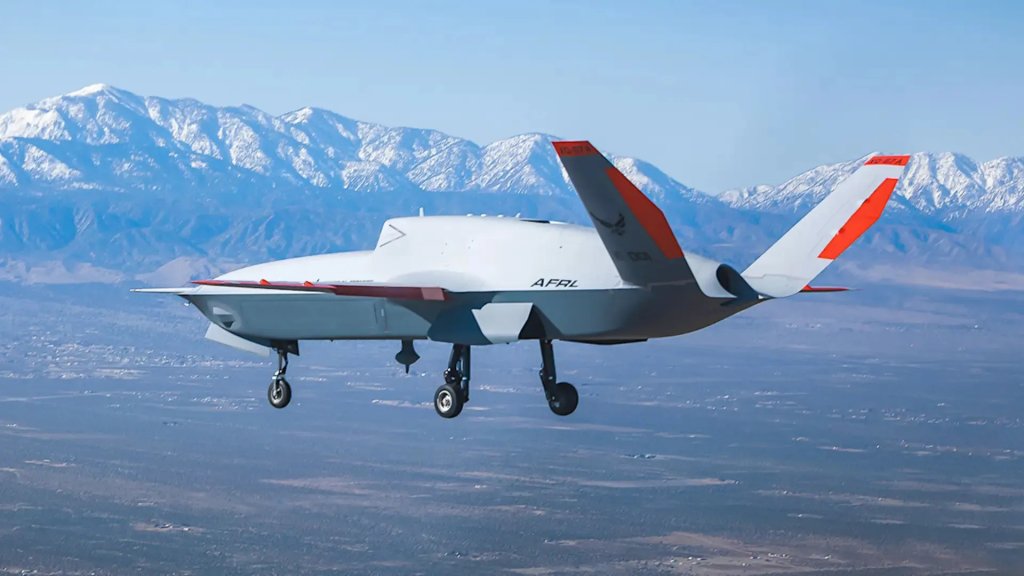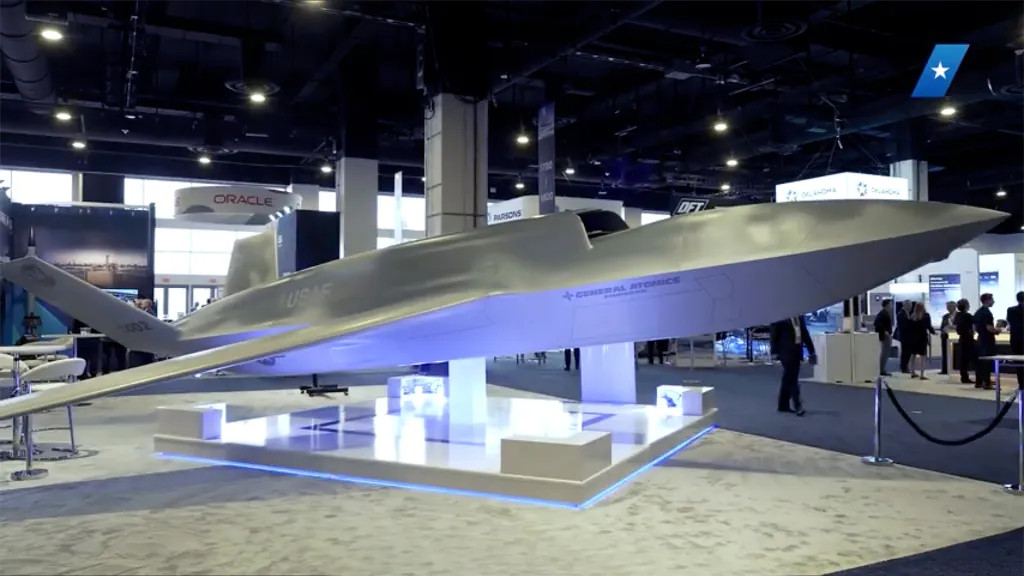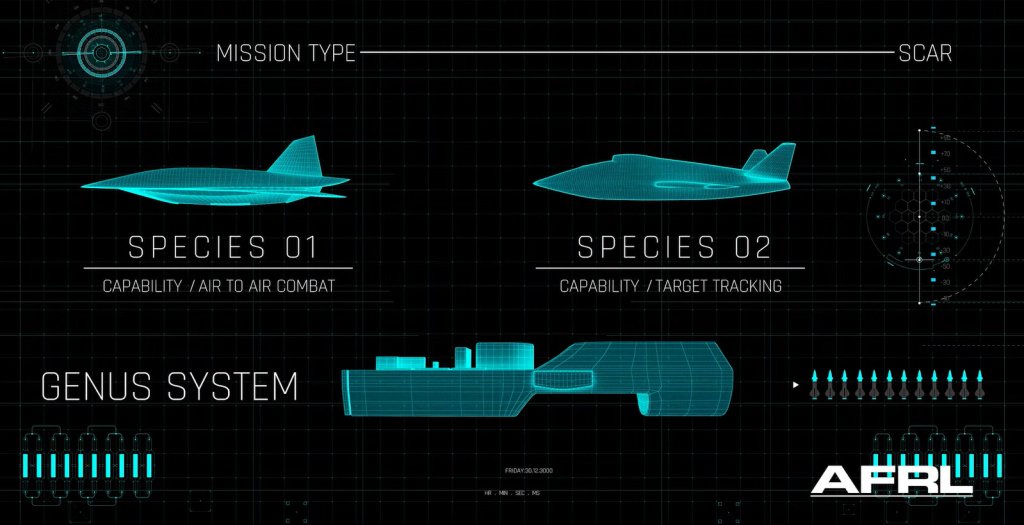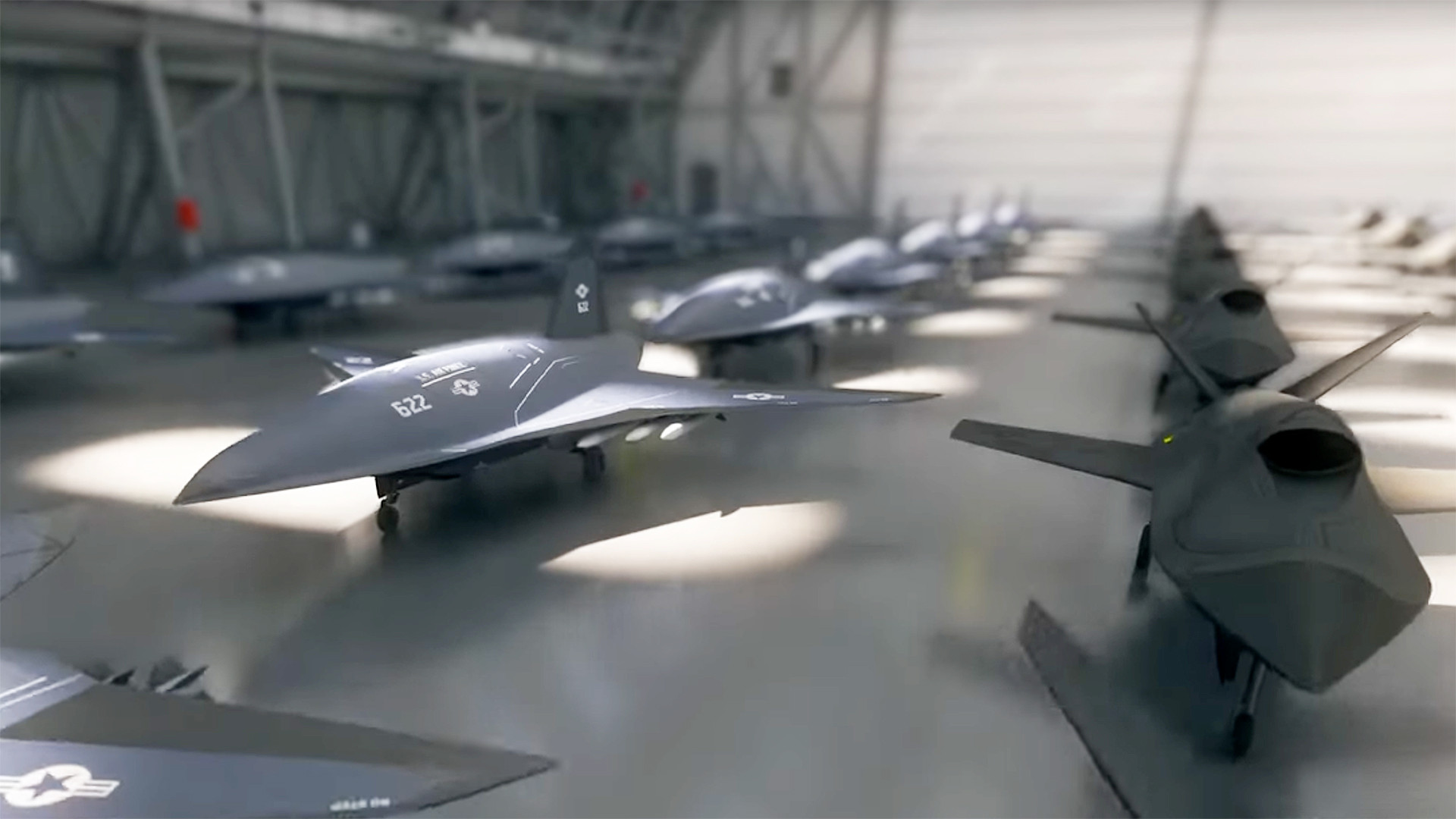The U.S. Air Force says the once-secretive Off-Board Sensing Station (OBSS) drone program has been fully folded into the service’s Collaborative Combat Aircraft (CCA) effort. General Atomics has already disclosed that its current CCA design is derived from the XQ-67 drone it developed for OBSS.
The Air Force and General Atomics have done pioneering work on the idea of accelerating the development and production of different kinds of drones by using a common core ‘chassis’ that includes landing gear and critical mission and flight control computer systems through OBSS. It is now hoped that these concepts will be beneficial to future tranches of CCAs.

Air Force officials offered new details about the relationship between the OBSS and CCA programs, as well as the earlier Low Cost Attritable Aircraft Platform Sharing (LCAAPS) effort, at the Air & Space Forces Association’s (AFA) main annual conference just outside of Washington, D.C., earlier this week.

“[Speaking] from the [Air Force] Test Center [AFTC] perspective, but also having some experience with the Lab [the Air Force Research Laboratory; AFRL], we went through a long process of developing that technology,” Air Force Maj. Gen. Scott Cain told The War Zone and others at a media roundtable on the sidelines of the AFA conference yesterday. “Our steps that we took … were proving out that system [the XQ-67] and making sure that it got through that first flight and airworthiness. And now that has been picked up … that program, OBSS, … did a seamless transition over to the CCA program.”
Maj. Gen. Cain is the current head of AFTC and was previously in charge of AFRL. The XQ-67 broke cover in February, as The War Zone was first to report, and the drone took the skies for the first time later that month.

In February, AFRL also presented the first real public chronology of how it arrived at OBSS, as you can read more about here. Simply put, a direct line flows from the Low Cost Attritable Aircraft Technologies (LCAAT) initiative, which kicked off in 2014, to LCAAPS in 2018, and then to OBSS in 2021. An explicit link from OBSS to CCA was not drawn at that time. CCA is leveraging other efforts, past and present, including the Air Force’s Skyborg project, as well. LCAAT also separately led to the Low Cost Attritable Strike Demonstrator (LCASD) project under which the Air Force acquired its first example of the Kratos XQ-58 Valkyrie drone.
At least a concept for an armed, higher-performance companion to the OBSS ‘sensor truck’ drone, called the Off-Board Weapons Station (OBWS), also exists. It is unknown whether or not an actual uncrewed aircraft is being developed, or already has been, as part of the exploration of OBWS. A key element of both OBSS and OBWS, and the overarching LCAAPs effort, was the idea of very modular designs using a high degree of common physical architecture. The Air Force and General Atomics have since described the idea of a common core as a “genus” from which multiple “species” of very differently configured drones can be created. Ahead of the AFA conference, AFRL put out the video below about LCAAPS and its underlying philosophy.

“So the Test Center supported the Lab in getting XQ-67 to that first flight and to do some early characterization of the platform,” Maj. Gen. Cain added at the roundtable yesterday. “There are other lessons from this about building a common chassis that will be carried forward. And the CCA program is ingesting those and thinking about those for future increments of the system.”
The CCA program is structured around relatively rapid iterative development cycles. General Atomics and Anduril are currently developing designs as part of the first cycle, or Increment One. The Air Force is also in the process of finalizing requirements for Increment Two.

As already noted, General Atomics has confirmed that its Increment One CCA is based on the XQ-67. The company is also now marketing an entire family of drones called Gambit that leverage a common core chassis.

“There’s an [XQ-67] OBSS down there [on the AFA show floor]. … There’s also [model of] a General Atomics CCA offering down there,” Air Force Gen. Duke Richardson, head of Air Force Materiel Command (AFMC), said at the same media roundtable yesterday as Maj. Gen. Cain. “So they might be similar, but they’re not exact. So if you look at them closely, they’re not exact. So we definitely learned a lot from the XQ-67.”
That OBSS and CCA are directly linked at a programmatic level is not surprising. In February, The War Zone highlighted the similarities in language being used to describe key elements of both programs, as how well the then newly disclosed OBWS concept seemed to align with the Air Force’s CCA plans, writing:
“Overall, OBSS looks more and more like it is at least a related exploratory effort running in parallel to the CCA program, and one that could be a key stepping stone for the latter to achieve its ambitious goals. The potential existence of an armed, higher-performance drone developed under OBWS, or at least the exploration of such a design, would also align with the CCA effort.”
Interestingly, Michael Atwood, Vice President of Advanced Programs for General Atomics, described the company’s CCA entry “as more of a weapons station” to the XQ-67’s “sensor station in an exclusive interview with The War Zone from the AFA convention floor, which you can find here.

The Air Force’s confirmation now of an explicit link between OBSS, and by extension LCAAPS, and CCA is still significant and raises new and interesting questions about how this focus may impact the latter program. The Air Force has already made clear that, win or lose, contractors can compete in as many increments of the program as they want. In addition, the service has said that companies not selected to develop CCA designs could still get contracts to actually build them in order to help meet its ambitious production and fielding timelines. Even having contractors utilize a centralized pool of components to some degree could help further accelerate these schedules, while also helping to reduce costs and streamline supply chains for sustainment down the road.
It isn’t clear what advantages the CCA program directly leveraging OBSS could provide to General Atomics. The Air Force does have a clear interest in the modular chassis approach that General Atomics has now done significant risk reduction prototyping on with the XQ-67, which is still being very actively tested.

The hope currently is that General Atomics and Anduril will have their Increment One designs flying by the end of the end of next year, if not well before then, and that the first operational CCAs will enter service before the end of the decade. Increment Two is supposed to kick off next year, as well.
“So what should Increment 2 be? Do not assume and it may not be just an evolution of Increment 1. It could be an entirely different set of missions. Could be [an] entirely different kind of an aircraft,” Andrew Hunter, Assistant Secretary of the Air Force for Acquisition, Technology & Logistics, had said at the 2024 Defense News Conference earlier this month. “And so part of that initial work is, again, starting with a large vendor pool, what are the good ideas out there? We’ll have some ideas [about] what we think Increment 2 needs to do as part of a broader force, and that’s part of this broader look at air dominance and how we’re going to deliver that.”
With what we know now, whatever CCAs the Air Force chooses to buy under any increment of the program could well look very different outwardly, but be much more similar inside than meets the eye.
Contact the author: joe@twz.com
